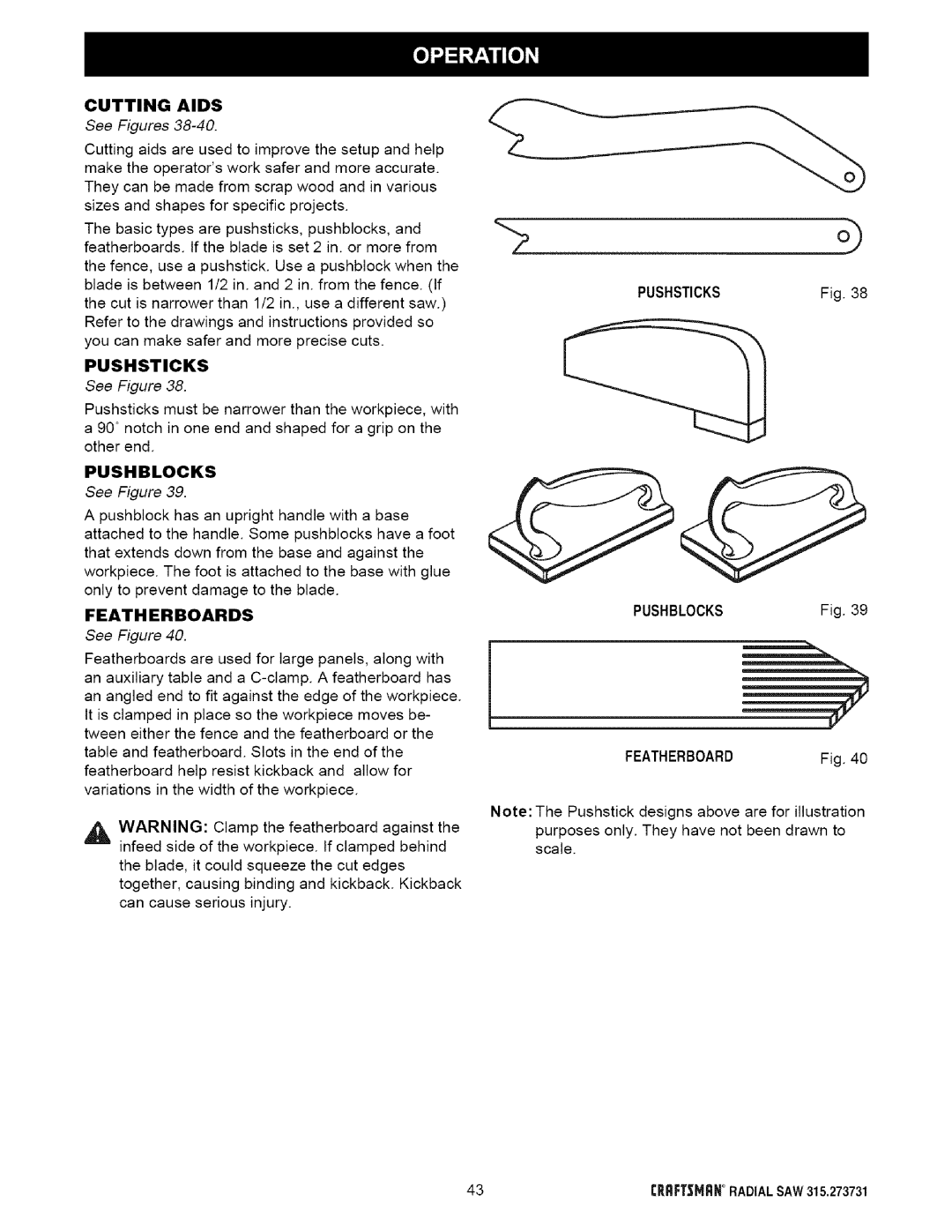
CUTTING AIDS
See Figures 38-40.
Cutting aids are used to improve the setup and help make the operator's work safer and more accurate. They can be made from scrap wood and in various sizes and shapes for specific projects.
The basic types are pushsticks, pushblocks, and featherboards. If the blade is set 2 in. or more from
the fence, use a pushstick. Use a pushblock when the blade is between 1/2 in. and 2 in. from the fence. (If the cut is narrower than 1/2 in., use a different saw.) Refer to the drawings and instructions provided so you can make safer and more precise cuts.
PUSHSTICKS
See Figure 38.
Pushsticks must be narrower than the workpiece, with
a 90° notch in one end and shaped for a grip on the other end.
PUSHBLOCKS
See Figure 39.
A pushblock has an upright handle with a base attached to the handle. Some pushblocks have a foot that extends down from the base and against the workpiece. The foot is attached to the base with glue only to prevent damage to the blade.
FEATHERBOARDS
See Figure 40.
Featherboards are used for large panels, along with an auxiliary table and a
_ WARNING: Clamp the featherboard against the infeed side of the workpiece. If clamped behind
the blade, it could squeeze the cut edges together, causing binding and kickback. Kickback can cause serious injury.
PUSHSTICKS | Fig. 38 |
4;;>4;>
PUSHBLOCKS | Fig. 39 |
FEATHERBOARD | Fig. 40 |
Note: The Pushstick designs above are for illustration purposes only. They have not been drawn to scale.
43CRRFTSMIqN° RADIALSAW315.273731
